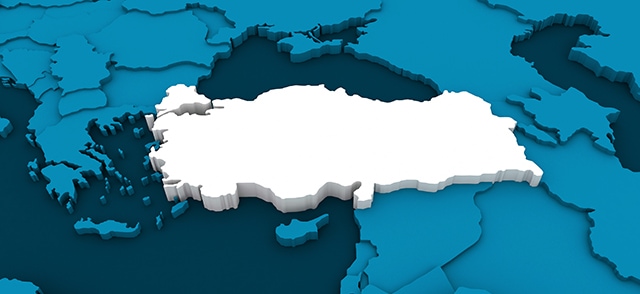Turkey's banks have had a good run but rising debts remain a worry.

Turkish banks are important drivers of Turkish growth. They have also been the biggest beneficiaries, with good asset quality, rising returns on equity and low levels of non-performing loans (around 3.5%, despite fears of a large rise).
“Last year was pretty good across the board for the banks, with activity fueled by the Credit Guarantee Fund, which also provided capital relief through the risk weighting of loans,” says Lindsey Liddell, a credit analyst at Fitch Ratings. Total loan growth for 2017 was around 21%.
Liddell and others expect to see a continuation of loan growth, but at a slower rate—around 12% to 15%—with a slight tightening in the disbursement criteria to keep sector fundamentals on track.
Banking Regulation and Supervision Agency president Mehmet Ali Akben told local media in early April that the banking sector was aiming for a capital adequacy ratio of 16.7% this year.
However, warning lights have started to appear—unsurprising perhaps, given the vast increase in loans relative to GDP (currently around 70%, against just 13% back in 2002).
Roger Kelly, lead regional economist at the EBRD in Istanbul, says the lira-denominated bank loan-to-deposit ratio jumped markedly last year, to around 140%, putting a squeeze on liquidity.
Liddell says there will be increased competition for domestic deposits, particularly among the larger banks, to alleviate the current heavy dependence on wholesale foreign currency, which has become more expensive with the lira’s devaluation.
Inan Demir, senior emerging EEMEA economist at Nomura Bank, highlights other worrying signs of overreach. If there is a shortfall in income from tolls for planned new bridges, for example, this may depress the appetite for future projects. He says some analysts are looking closely at the size of Turkish corporate foreign debts, which are equivalent to 40% of GDP.
The difficulties that holding firm Otas had in renegotiating its $4.75 billion of loans to buy a stake in Turk Telecom, and that sweets-and-cookie producer Yildiz Holding had in refinancing a $7 billion loan, raised eyebrows.
“These companies are large, successful and have sophisticated risk management processes, so problems were not anticipated,” says Demir. “What concerns me is there could be more things like this in the pipeline.”
Deputy prime minister Mehmet imek has said he will look at making it easier for investment banks to start up operations, as part of a broader strategy aimed at making the country’s capital markets more efficient.
“The future of the financial sector is bright, as the strength of the banking sector will likely spread to investment banking, insurance, non-bank financial institutions and the like,” says a spokesman for investment bank Yatrm. “Penetration levels in these sub-segments are still overly low, presenting a great growth potential in the future.”
“Despite all the noise, there have been no problems in banks accessing wholesale capital markets,” says Liddell. “I expect 2018 to be a year of normalization in terms of both loan growth and bank performance.”



